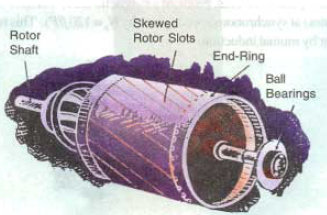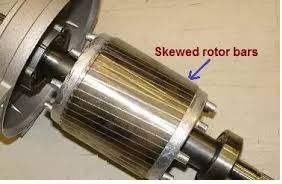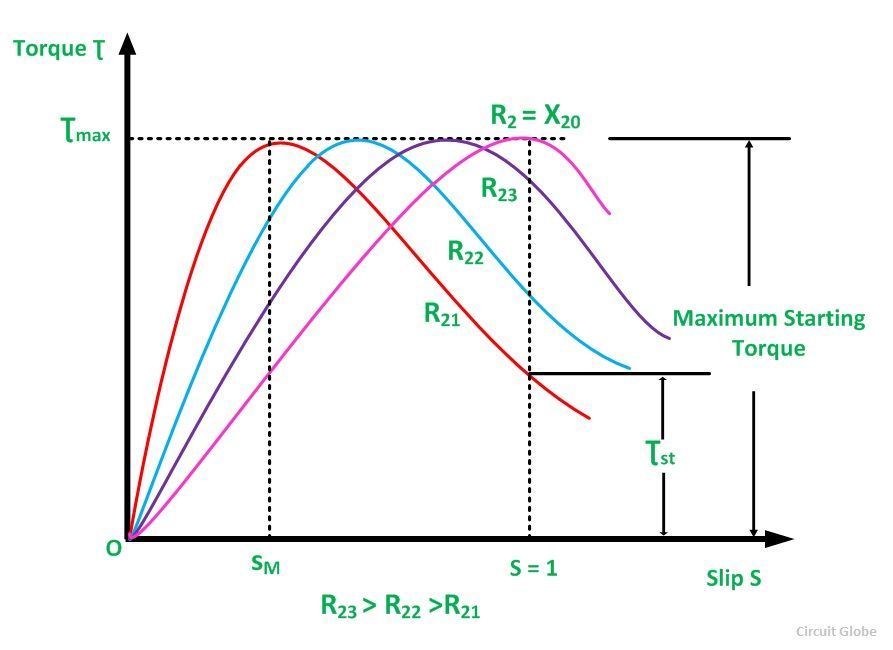What is Skewing of Rotor Slots?

As shown in the above picture, the rotor bars of an induction motor are not parallel with the shaft, and the bars are skewed. The rotor bars are skewed purposefully to gain the following performance advantages.
Advantages of Skewing of Rotor of Induction Motor
There are the following advantages of skewing rotor slots.
- Increased Starting Torque
- Prevents Cogging
- Prevents Crawling
- Reduce Magnetic Hum
Now, we will discuss all the above points to understand the importance of skewed rotor slots in induction motors.
Increased Starting Torque
The induction motor’s torque is proportional to the product of the rotor current and the rotor power factor. The length of the rotor bars increases with skewing.

The length of the rotor conductor is greater if the conductor is put in the skewed rotor slots. The resistance of the conductor depends on the length and the cross-sectional area of the conductor. With skewing, the rotor conductor length increases, and the cross-sectional area gets reduced.
Resistance(R)=p x (L/A)
The increased resistance improves the power factor of the rotor circuit and the motor’s starting torque-delivering capacity. The higher the rotor resistance(R2), the higher the starting torque.
This is particularly beneficial in squirrel cage rotors, where skewed rotor bars help improve startup performance.
The speed-torque curve shown in the image below illustrates how variations in rotor resistance influence the torque performance of an induction motor.

Prevents Cogging
If the number of stator slots is equal to the rotor slots or integral multiples, and the rotor bars are not skewed, the motor may refuse to start because of the magnetic locking between the rotor and stator teeth. The phenomenon is called cogging.
When rotor bars are mounted in a slightly skewed position in a 3-phase motor, this prevents cogging by misaligning the stator and rotor slots and reducing magnetic locking.
Prevents Crawling
The Phenomenon of running the induction motor at a very low speed is known as crawling. The harmonics are responsible for the crawling phenomenon. The motor may crawl at the Ns/7 or Ns/13 the speed.
By using skewed rotor construction, the effects of these harmonics are minimized, thus preventing crawling.
Reduces Magnetic Hum
Skewing of rotor bars reduces magnetic hum and noise during motor operation. This makes the motor quieter and improves overall performance.
Skewing Angle in Induction Motor
The rotor skew angle formula is given below.
= 720/n(P/2) Degree electrical
Where,
P= Number of poles
n= Order of Harmonics
Conclusion
Skewing in induction motors is a crucial design element, especially for squirrel cage rotors. It increases starting torque, eliminates cogging and crawling, and reduces noise.
This is why rotor bars are skewed in three-phase induction motors — ensuring smoother, quieter, and more reliable motor operation.
Related Article:
most usefull